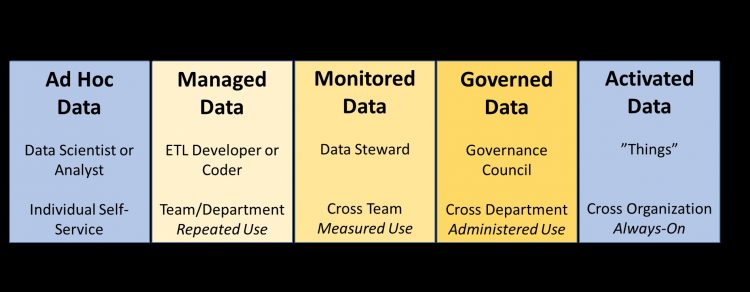It has been a few weeks since SAS Global Forum in Las Vegas - however the buzz is still on! At this yearly Flagship event by SAS Institute, we experienced several interesting things and sessions, with many must-see presentations daily. Amongst the highlight was the launch of SAS® Viya and SAS® Customer Intelligence 360 from stage, which was impressive! Nevertheless, Being the Data Management supporter I am, my eyes and ears were eager to learn news about Data Management.
From what I learned at the conference, Data Management needs to be universal, and executed as self-service by the information-hungry Citizen Data Scientist. Furthermore, it needs to be constantly processed as “things” produce data streams that will not be run only in the organization´s own data centers, but rather happen constantly, in all imaginable places:

- In SAS, being processed by highly-scalable micro service architecture
- In Hadoop, which is capable of storing all types of data
- In Memory, which provides entirely new possibilities and fast response time
- In Database, where the data already resides
- In Cloud, who speeds up the ramp-up time for new “analytical lab” type of approaches, and finally
- In the data Streams, generated by sensors and intelligent devices
Read this paper on how data integration continues to evolve, from real time to streaming, and how SAS can help organizations keep their approach to DI current.
Self-service models Business Intelligence self-service model has been here for years. With modern data consumers expecting more flexibility and independence from the IT departments, we experience a growing demand for self-service and Ad Hoc style of Data Management. Users know what data they need to accomplish their desired analytical outcomes; they need access and intuitive Data Management user interfaces to prepare their data. The first SAS wave of self-service solutions is already available: the SAS® Data Loader for Hadoop, which is a flexible, yet powerful data preparation solution for use on Hadoop data platforms.
Current Data Management solutions are typically batch-oriented and there will always be the need for ETL type of Data Management, where things happens in sequence, in expected time slots. This may however, not be the case for data streams generated by devices that are always on, such as the sensors embedded in everyday technology. Examples could range from our mobile phones, to trucks roaming the roads and assembly lines in modern manufacturing plants. There is need for real-time analytics and Data Management, events in the data stream right now may be obsolete if we wait for the nightly batch run to analyze it. To cover this need, SAS® Event Stream Processing is able to manage and analyze data streams at millisecond response times and gather the events that peak our interest for further analyzing or pre-defined path of actions.
As conclusion, the field of Data Management is becoming even more complex with new types of data and a variety of deployment options, requirements for flexibility, self-service and real-time. While this may sound difficult or even impossible to overcome, solutions exist. See SAS® Data Management to find out how SAS Institute can help you.
